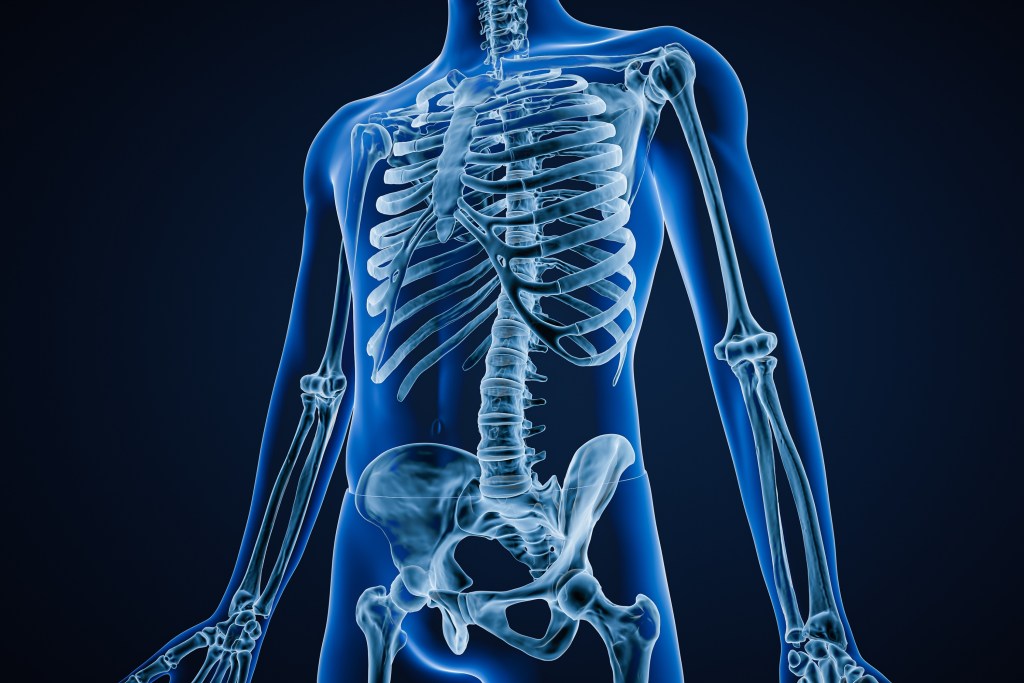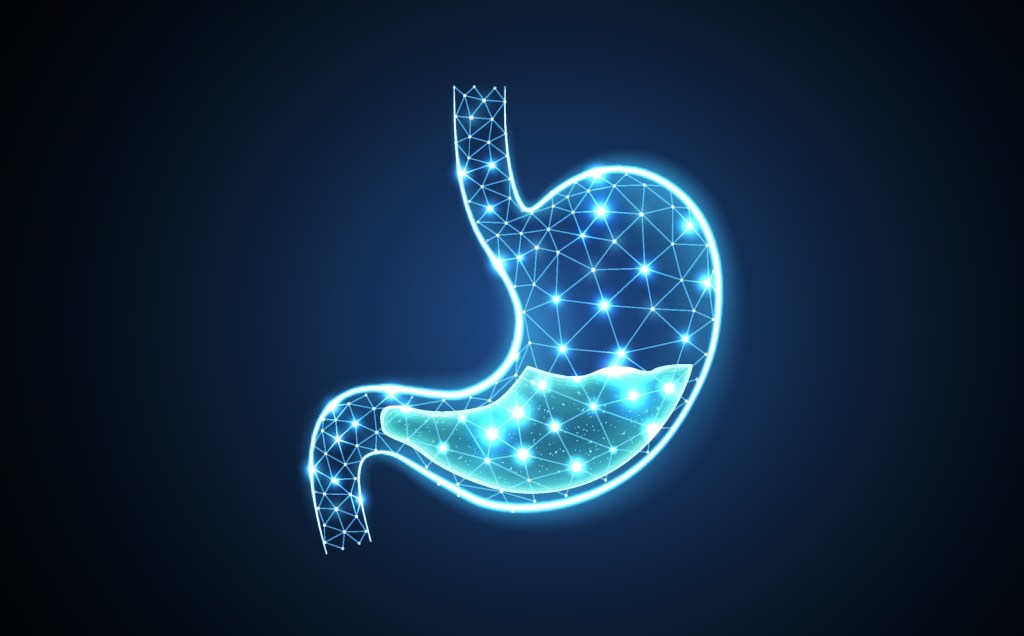At a glance
Calcium is an essential mineral crucial for maintaining bone health, supporting muscle function, and facilitating nerve signaling. While dietary sources are generally preferred, supplementation may be necessary for some individuals. Understanding what is the best type of calcium can support optimal absorption, ensure minimal side effects, and promote long-term skeletal and overall health.
Calcium supplements are among the most popular dietary supplements often used by those seeking to promote bone density and skeletal health.
However, not all types of calcium are created equal or offer the same potential health benefits.
Discover the best calcium sources and learn why calcium balance relies on healthy digestive functions and adequate vitamin D levels.
What is calcium?
Calcium is an essential mineral that plays a critical role in the structure and function of the skeletal system, primarily due to its involvement in bone formation.
Calcium is the most abundant mineral in the human body, with most adults containing between 1 and 1.2 kg (2.2 to 2.6 lbs) of elemental calcium.
Approximately 99 percent of this calcium is stored in the bones and teeth, where it provides structural integrity. The remaining one percent circulates in the blood, playing a key role in supporting muscle function, nerve signaling, and other essential physiological processes.
Because only a small proportion of the body’s calcium is found in the bloodstream, it can be challenging to evaluate an individual’s overall calcium status through blood tests alone.
“The body prioritizes maintaining steady blood calcium levels and will stimulate calcium release from the bones if dietary intake is low,” explains Dr. Berg. “As a result, blood calcium concentrations don’t reflect dietary calcium intake or bone calcium stores.”
Bone density tests, such as dual-energy X-ray absorptiometry (DEXA) scans, offer a more comprehensive picture of bone health by measuring the mineral content and density of bones.
Watch the video below to discover some of the best dietary sources of calcium.
How much calcium do you need?
Calcium needs vary based on life stage and health status. Factors such as age, pregnancy, and menopause can influence how much calcium the body requires to support healthy bones and skeletal integrity.
A report published by the National Institutes of Health (NIH) recommends 1000 mg of calcium daily for men and women aged 19 to 50, as well as pregnant or lactating women in that age group.1
For postmenopausal women over 50 and all adults over 70, the recommendation increases to 1200 mg per day to help minimize the risk of calcium deficiency in the older population.
To support skeletal development and growth, all children and teenagers aged 9 to 13 should obtain around 1300 mg of calcium daily.
However, research published in Nutrients investigated dietary and supplemental calcium intakes and found that a large proportion of U.S. adults don’t consume adequate amounts of this essential mineral.2
The authors summarize, “While concerns regarding calcium deficiency among the US population have been clearly established previously, the results reported in this study reveal a concerning decline in calcium intake among the US population.”

Who should avoid taking calcium?
While adequate dietary intake of calcium is essential for bone and overall health, not everyone should take calcium supplements as they may do more harm than good.
In some individuals, especially those with risk factors for cardiovascular disease, too much calcium, especially from dietary supplements, may contribute to calcium buildup in the arteries.
Those at increased risk of kidney stones should also be cautious with calcium supplementation, as this may encourage the formation of calcium oxalate stones, which are linked to poor kidney function and kidney disease.
Furthermore, individuals with hyperparathyroidism and those taking thyroid medications or bisphosphonates, often prescribed to people with low bone mass to mitigate fracture risk, can develop calcium imbalances and are advised to avoid calcium supplements.

The best types of calcium
Balanced calcium metabolism depends on many factors, including maintaining adequate levels of vitamin D as well as other minerals such as magnesium and phosphorus.
Therefore, just taking a calcium supplement may not be effective, and in some cases, could disrupt the body’s natural mineral balance.
In general, dietary calcium from whole foods is preferred, as it’s naturally balanced with other nutrients and less likely to lead to excess intake.
However, calcium supplementation may be warranted under medical supervision in individuals at increased risk of deficiency, such as older adults and postmenopausal women, or those following vegan diets.
In these cases, calcium citrate is generally considered the best form as it’s well absorbed, making it ideal for people with digestive issues, low stomach acid, or those taking acid-reducing medications.
This has been confirmed by evidence published in The Journal of Bone and Mineral Research, reporting that calcium citrate is more effective at raising calcium concentrations than calcium carbonate supplements.3
Calcium citrate is also less likely to cause gastrointestinal issues, such as bloating, abdominal pain, or constipation, than other types of calcium.
In addition, calcium malate and calcium hydroxyapatite have shown promise in supporting balanced calcium levels and overall bone health.
However, while early research is encouraging, long-term data on their safety and effectiveness are still limited, and more evidence is needed to fully understand their role in calcium metabolism and bone maintenance.

The worst types of calcium
Calcium carbonate is one of the most commonly used forms of calcium in over-the-counter supplements and fortified foods, largely because it’s easy and inexpensive to produce.
However, calcium carbonate supplements aren’t very effective at supporting optimal calcium levels and are associated with side effects. These include gas, bloating, changes in stool consistency, and nausea, especially when taken on an empty stomach.
In addition, there are other types of supplemental calcium that aren’t recommended due to poor absorption, low potency, or a higher risk of contamination with heavy metals.
Some of the worst types of calcium include:
- Calcium lactate
- Calcium gluconate
- Calcium magnesium carbonate, also known as dolomite
- Oyster shell-derived calcium
- Bone meal

The best food sources of calcium
Getting adequate calcium from dietary sources is the most natural and effective way to support the body’s mineral balance and bone strength.
Dairy products such as milk, cheese, and yogurt are among the richest sources of dietary calcium.
Here’s the approximate calcium content of popular dairy foods:
- Whole milk: 300 mg per 1 cup (240 ml)
- Plain yogurt: 250 mg per 6 oz (170 g)
- Cheddar cheese: 240 mg per 1 oz (28 g)
- Mozzarella cheese: 220 mg per 1 oz
- Cottage cheese: 125 mg per 1/2 cup (113 g)
However, dairy products may not be suitable for everyone, especially those with lactose intolerance.
Fortunately, there are many non-dairy calcium-rich options that can help meet daily needs and support the potential health benefits of a calcium-rich diet.
Some of the best non-dairy sources of calcium include:
- Sardines: 370 mg per 3.5 oz (100 g)
- Sesame seeds: 280 mg per 1 oz (28 g)
- Collard greens (cooked): 150 mg per 1 cup (130 g)
- Kale (cooked): 180 mg per 1 cup
- Salmon: 180 mg per 3.5 oz
- Chia seeds: 180 mg per 1 oz
- Tahini: 130 mg per 1 oz

Tips for increasing calcium absorption
Simply focusing on calcium-rich foods may not be enough to maintain healthy levels, as calcium absorption is a complex process that depends on a variety of nutrients and proper digestive function.
Here are four tips to increase calcium absorption.
1. Maintain healthy vitamin D levels
Optimal calcium absorption requires adequate levels of vitamin D, which helps the body absorb calcium by facilitating its uptake from the digestive tract into the bloodstream.
This explains why supporting healthy vitamin D levels is critical for calcium balance and skeletal health.
Getting enough vitamin D from sunlight exposure and regularly consuming vitamin D-rich foods such as oily fish, egg yolks, and beef liver is one of the most effective ways to maintain vitamin D levels.
2. Prioritize magnesium-rich foods
Magnesium, calcium, and vitamin D work in combination to support the body’s calcium balance.
Magnesium-dependent enzymes are crucial for converting vitamin D into its active form, which is necessary for calcium absorption in the intestines.
Some of the top magnesium-rich foods include pumpkin seeds, almonds, leafy greens, avocados, salmon, mackerel, and dark chocolate.

3. Support optimal digestive functions
Mineral absorption depends on proper stomach acidity as stomach acid plays a critical role in breaking down foods and releasing nutrients, especially calcium, magnesium, iron, and zinc.
However, factors such as stress, aging, nutrient deficiencies, and antacid drugs suppress the stomach’s acidity and can cause low stomach acid. This can hinder digestive processes and significantly lower mineral absorption.
Taking a diluted apple cider vinegar drink before or with a meal is a simple but effective strategy to promote stomach acidity and enhance digestive efficiency.
4. Avoid phytates
Phytates, a group of plant compounds found in grains, legumes, nuts and seeds, are classified as anti-nutrients as they can bind to calcium, which reduces its absorption in the gut.
To minimize their impact, avoid foods high in phytates, especially alongside calcium-rich meals.
Key takeaways
- Calcium is vital for skeletal integrity, and most of the body’s calcium reserves are stored in bones and teeth.
- Forms such as calcium citrate, calcium malate, and calcium hydroxyapatite are generally better absorbed than calcium carbonate.
- Maintaining adequate levels of vitamin D and magnesium, as well as optimal gut health, is essential for effective intestinal calcium absorption.
- Certain calcium supplements, including calcium carbonate, oyster shell, and bone meal, may cause digestive issues or contain potentially harmful contaminants.
- Individuals at risk of cardiovascular disease, kidney stones, or those with health problems should consult a healthcare provider before incorporating calcium supplements.
FAQ
1. What is the best form of calcium to take?
Calcium citrate is generally considered the best supplemental form as it’s well absorbed. It’s also less likely to cause digestive discomfort than other forms, such as calcium carbonate.
However, the ideal type of calcium may depend on individual health needs, and consulting a healthcare professional is recommended.
2. Which calcium source is best?
Dietary sources of calcium are the best option as they provide calcium in a natural form along with other beneficial nutrients that support absorption and bone health.
Dairy products, leafy green vegetables, nuts, and mackerel are excellent choices for supporting balanced calcium stores.
3. What is the best calcium to take over 50?
Calcium citrate and calcium hydroxyapatite are often recommended for individuals over 50 due to their high absorption rate and potential bone-supporting properties.
4. How do I raise my calcium levels fast?
To raise calcium levels quickly, prioritize calcium-rich foods such as dairy products, sesame seeds, leafy greens, and nuts.
Additionally, promote healthy vitamin D levels through adequate sunlight exposure and consume plenty of magnesium-rich foods to enhance intestinal calcium absorption.
Sources
- https://ods.od.nih.gov/factsheets/Calcium-HealthProfessional/ ?
- https://www.mdpi.com/2072-6643/16/5/726 ?
- https://academic.oup.com/jbmr/article-abstract/3/3/253/7502007 ?


















